In July I tried my hand at Dip netting in the Copper River outside of Chitina. Dip netting is only open to Alaska residents, and having achieved my resident status in May I was anxious to see what it was all about. Although there are a few other places in the state where dip netting is allowed I had some good advice that my vacation coincided with the better dip netting at the Copper river, and relative to some of the dip netting on the Kenai it is supposed to be less crowded.
Salmon migrate each year up this river heading to their spawning grounds. Although salmon are capable of swimming great distances against phenomenal currents, they try to take the path of least resistance when possible. Most river currents are fastest near the middle or closer to the cut bank edge. Since the salmon are trying to avoid the stronger currents, they tend to run the river edges. The most productive areas in these river edges are the back eddies. The back eddies along the side of the river provide a resting place for some fish, and somewhat of a sling shot for those passing through. They also help the dip netter keep their net open in the direction the fist is headed.
The basic idea of dip netting the faster rivers, like the Copper, is that you hold a large net in the river, usually in a back eddy, and the salmon swimming upstream simply swim into the net. Other rivers with less current, and more gentle banks lend themselves to a sweeping motion where the net operator drags the net through the water. The rivers are usually turbid this time of year, so you can’t see the salmon, but feel the tug of the net when a fish enters, and yank it out of the water. With the fish out of the water you rather hurriedly bonk it on the head to kill it, and run a stringer through its gills. Toss the fish in the water, and then get your net back into the river. It helps to have a partner to throw a recently caught fish to for the bonking, and stringing so the net handler can get the net in the water as soon as one is removed. Salmon sometimes pulse up the river in groups, and while you might have waited for 20 minutes to catch the first fish, there could be a dozen swim by in the time it takes you to remove the fish from the net, kill it, string it, and get it back in the water. I had a buddy with me, but unfortunately the Alaska Department of Fish and Game will not allow a non-resident to take part in any of the dip netting process, they are only allowed to watch and take pictures.
The way I see it, there are three options for most people who want to dip net the Copper. The first is to pay a daily trespass fee (I think $15) to the Native corporation that owns the beach next to the parking area, and dip net there close to the canyon. The second is to be ferried in a jet boat into the canyon. This involves getting to the parking area the night before you plan on fishing, place your cooler in a line that will be forming from the boat landing, and camp in your car. Then get up early (3:30AM), and wait in line with your cooler and all the other people seeking a ride on a jet boat to the more prime dipping areas. The ride on the jet boat will cost at least $100/person, but slightly more if all are planning to dip as many fish as they are allowed. The last option is to bring an ATV for the upper trail or just walk the trail, and plan on a steep hike down into and out of the canyon. It appeared to me that the best areas were only a mile or two from the parking area, and there was a trail that paralleled the river that apparently ATV’s can run. The down side to this option is carrying your cooler and fish up and down from the trail to the waters edge. The canyon is steep, and the water in the Copper is fast, approximately 14mph this time of year. I have been told by a number of people that folks drown every year dip netting this stretch of the river. There is a fourth option… bring your own boat. Unless you have a fairly powerful boat with deep sides, and are accustomed to the fast rough water I wouldn’t consider this as an option.
Paying a trespass fee to the Native Corporation is a relatively inexpensive way to dip net near Chitina and although I did see some people catching fish it doesn’t seem to hold much adventure, and appeared to be less productive than the canyon.
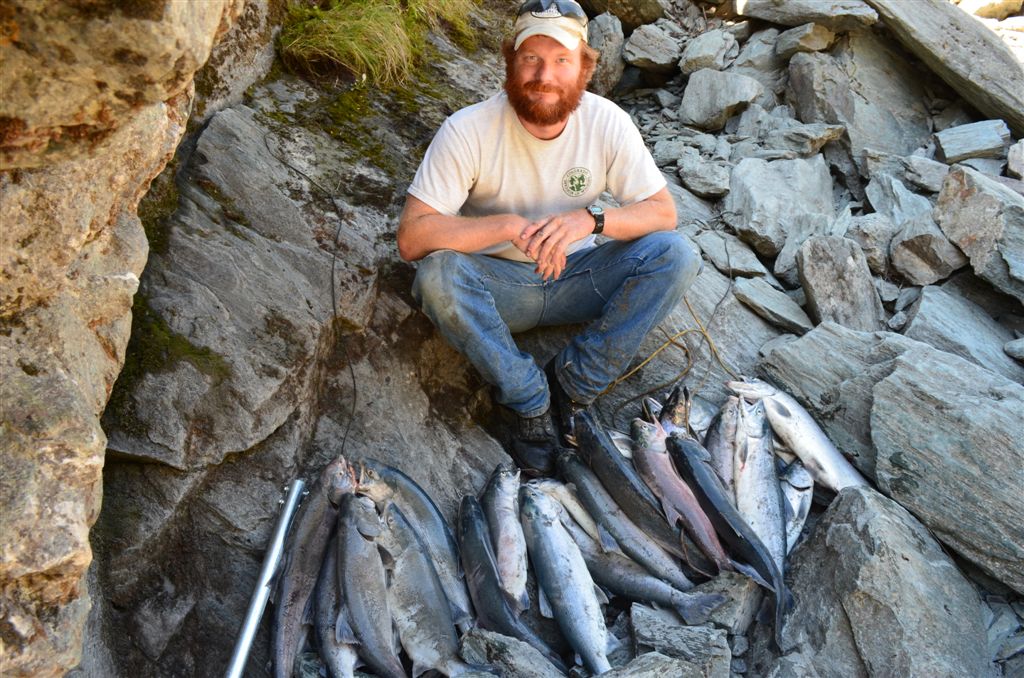
The jet boat charter is a great way to go if you have the money and want the added security of someone checking on you while you are out, but compared with the apparent option of burning a few calories and sleeping in I don’t think they will be getting my money next year. I was only aware of the jet boat option when I planned this trip, so that is what I tried. It cost me and my buddy $100 each to ride about a mile and a half down the river, be dropped off, checked on every few hours, and be transported back. Pretty steep taxi ride in my opinion. I plan to dip net this area again, but will in the future try walking the ATV trail or riding if fortune finds me with an ATV next year.
You will obviously need a large net to dip net, and although it can probably be done with the same net you might keep in your boat for landing larger fish, I wasn’t going to risk spending all the time, and money to try it, and not have the right gear. I bought my dip net at a grocery store for about $180. Not exactly where you would expect to find specialized fishing tackle, like a net with a 4 foot hoop, and a 15′ handle. As it turns out my large net with the round hoop is better suited for the slower rivers. It was challenging at times to handle it in the swift water of the copper. Most who dip net the Copper use smaller nets with flat sides on the hoops. This helps for resting the net on the bottom of the river bank.
Sometimes it felt like I caught a fish every five minutes and sometimes it felt Like I had waited an hour before even missing one. I was allowed 25 fish, and it took me a little less than 8 hours to catch my limit of red (sockeye) salmon. I am fairly certain this has become one of my favorite ways to fish.
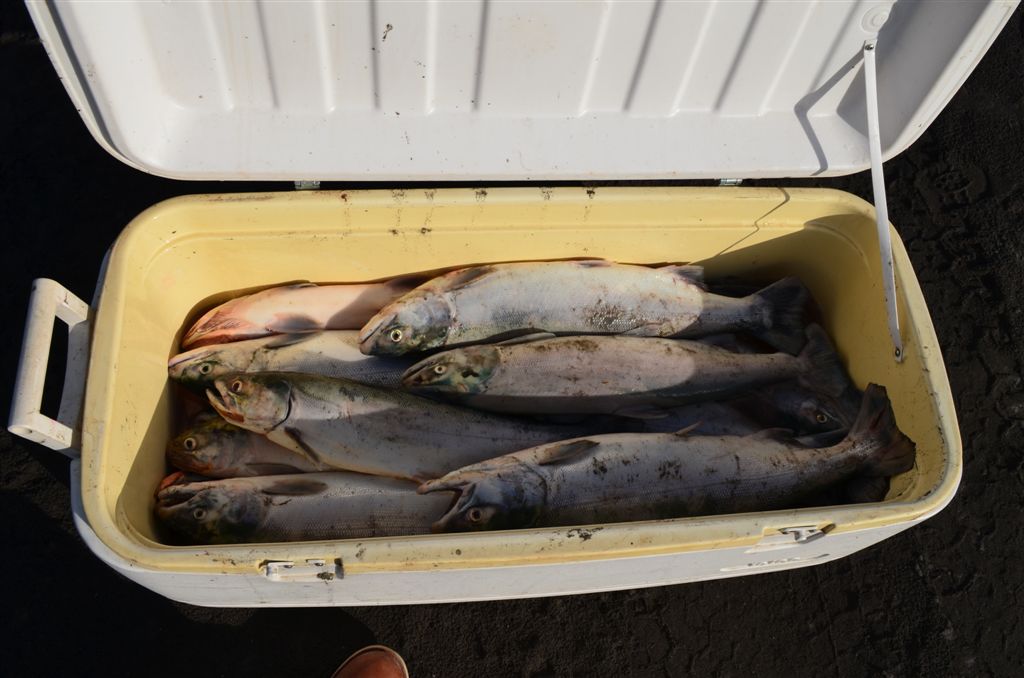
With our limit filled and our cooler loaded we headed to the airport to meet my cousin Mike who was flying in from Palmer in his super cub. Mike had volunteered to fly in and bring our fillets back to Palmer for freezing so we could continue our Vacation before heading back in the direction of the Mat-Su Valley. The super cub is a small two seater airplane, that with the back seat removed became the ultimate salmon fillet transporter.
There is a small business set up at the parking area that will clean your fish for $1.50 each, but we elected to drive a couple miles to a more braided area of the river and clean the fish ourselves. As fortune would find it, we lucked out and got invited to use someone’s fish cleaning table that was set up in the river. They were cleaning their salmon that had been recently caught with a fish wheel. Fish wheels are a popular way to harvest salmon for subsistence purposes. When the fish are running strong, the fish wheels require almost constant observation.
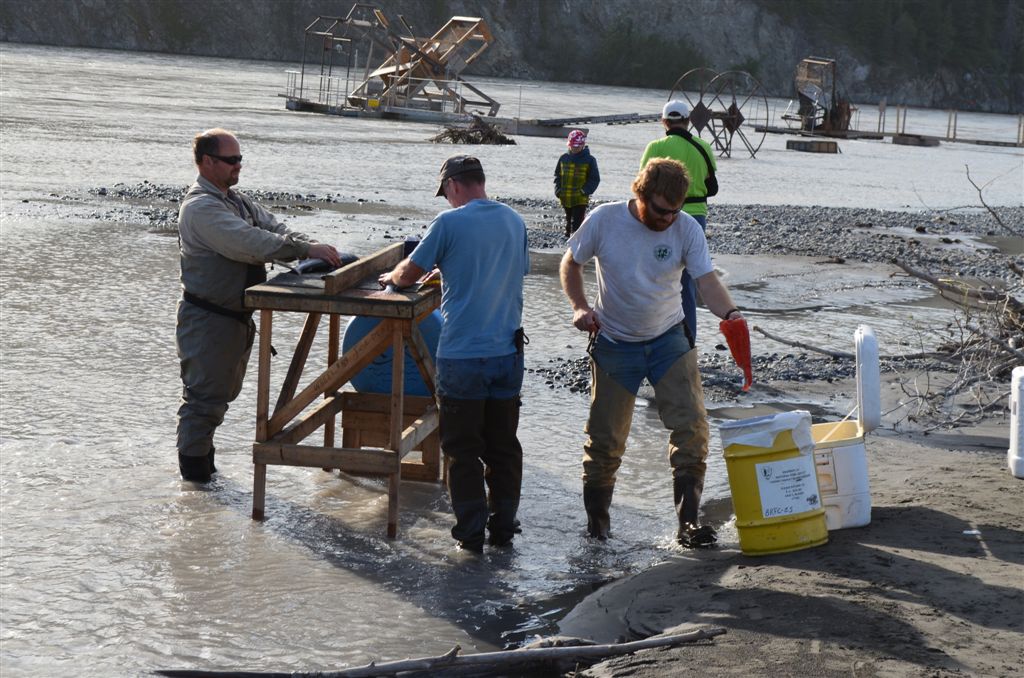
We camped out that night and fished a small “walk-in” access lake nearby for Rainbow trout with the fly rods. The lake was beautiful, and we only ran into one other guy fishing it in the two days we were there. Three guys wielding fly rods in a canoe can be entertaining, and somehow we caught a few fish too.
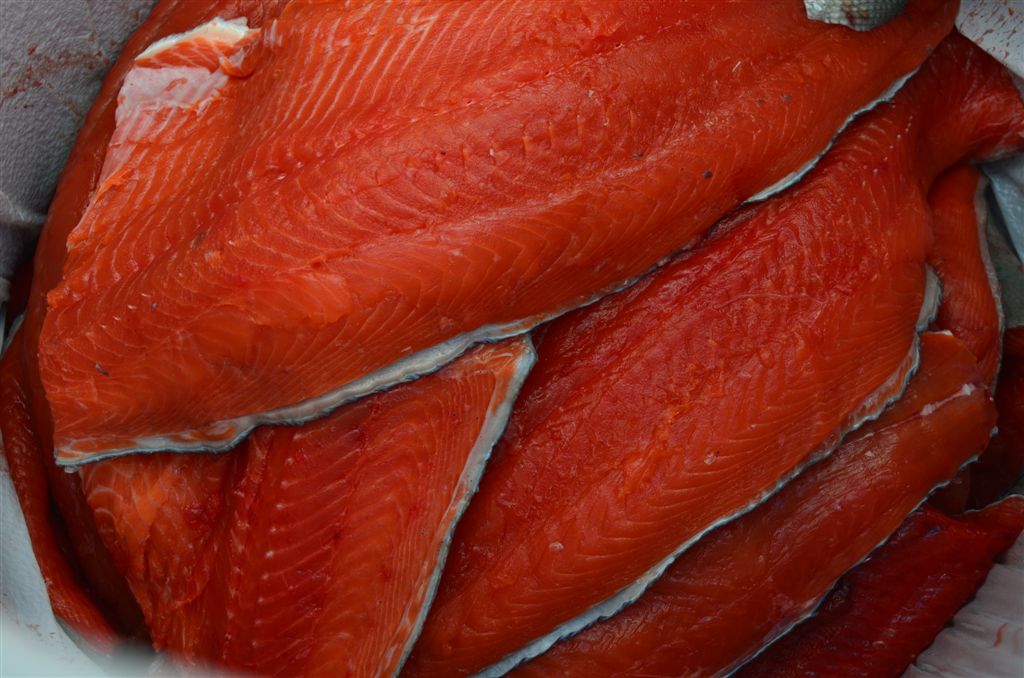
We camped out that night and fished a small “walk-in” access lake nearby for Rainbow trout with the fly rods. The lake was beautiful, and we only ran into one other guy fishing it in the two days we were there. Three guys wielding fly rods in a canoe can be entertaining, and somehow we caught a few fish too.
Overall the trip probably cost me close to $600 including fuel, groceries, jet boat ride, a net, and beverages, but the cans of salmon, and the experience have already made the price tag more than worth it, and in the future I hope to be able to do a similar trip for about half this since I already own the net, and have the information on how to access the canyon without a chartered jet boat. I would compare dip netting salmon with bow fishing for carp mixed with lounging in a cheap folding chair watching a stiff ugly stick for the tug of a monster cat fish. If you are a resident of Alaska or planning to become one “someday”, you are not experiencing all Alaska has to offer until you dip net salmon out of one of the faster rivers.
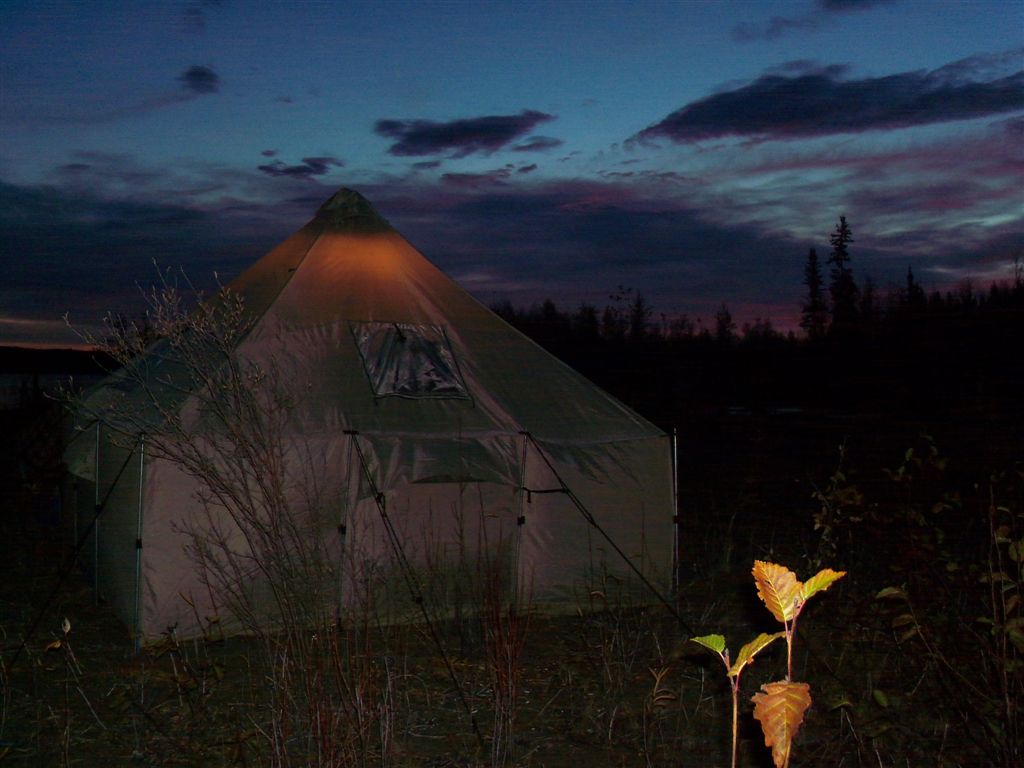

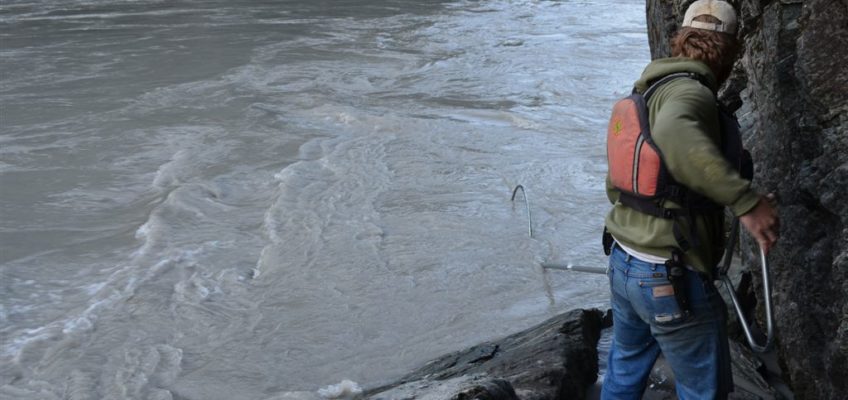
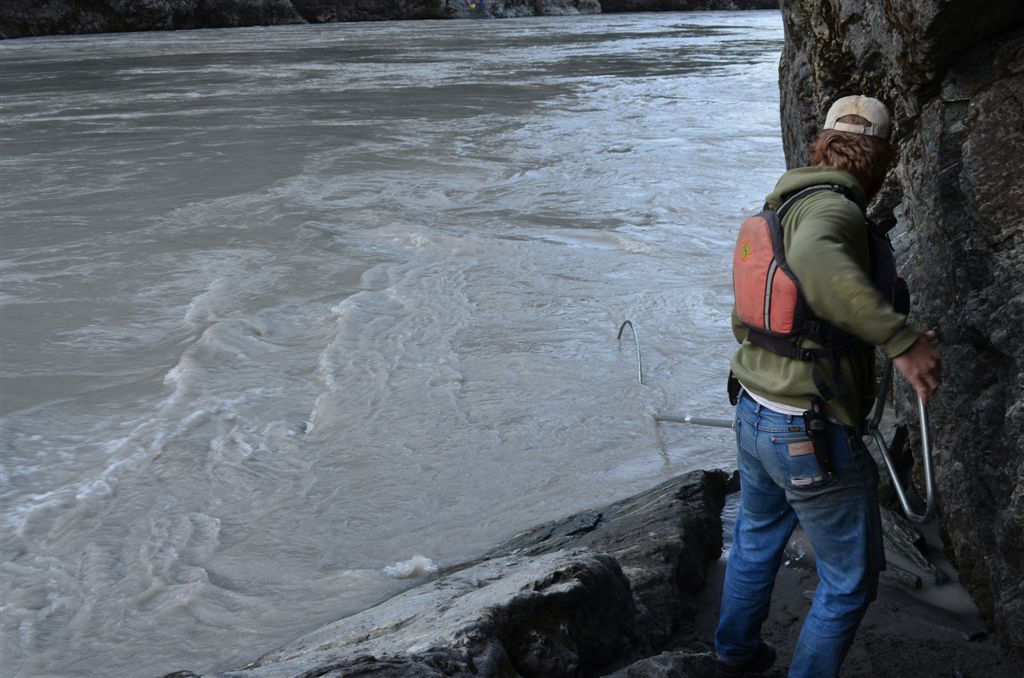
Heidi
Hey Zach,
Looks like you continue to find adventure in Alaska. I grew up in Northwest Washington State and I think the only people allowed to net fish salmon there are the Native Americans. I don’t even think other people can get a permit to do it.
Kinda looks fun! Looking at all those salmon has made me hungry.
Zach Sanders
Alaska is pretty good to its residents. While the natives do get to enjoy a few things the rest of us don’t; dip netting isn’t one of em’!